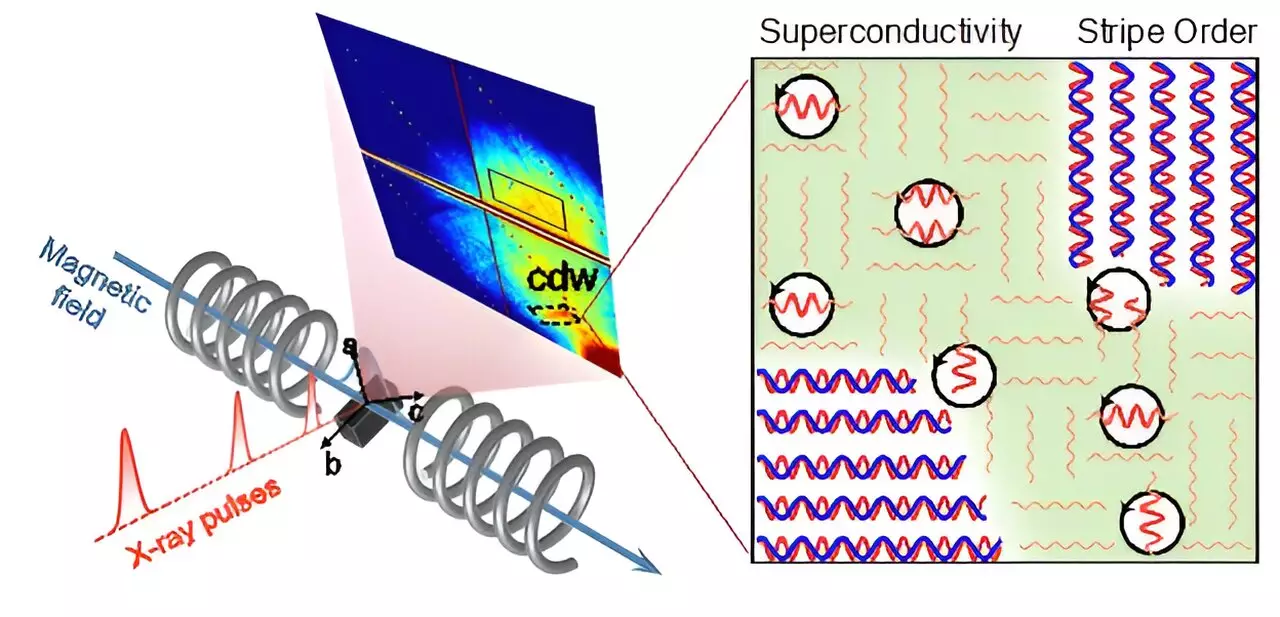The vibrant world of high-temperature superconductors, particularly cuprates, is a fascinating realm where conventional physics is continually challenged. These materials, characterized by their unique electron interactions, have become the focal point of intense scientific inquiry. Within cuprates, phenomena such as magnetic spin and charge density wave (CDW) order do not merely coexist but engage in a competitive dance that defies straightforward scientific interpretation. This complexity raises critical questions about the underlying mechanisms that promote superconductivity and how various interactions among electrons can lead to unconventional states.
Shifting Perspectives on Charge Density Waves
Recent research published in *Nature Communications* has unveiled critical insights that challenge long-standing assumptions about the interplay between CDWs and superconductivity. Traditionally, it was believed that the formation of CDWs, especially in their long-range forms, would invariably suppress superconductive states. However, surprising findings suggest that short-range CDWs can harmoniously coexist alongside superconductivity in the cuprate materials, adding a layer of richness to our understanding of electronic behaviors. This paradigm shift opens avenues for refining theoretical models that connect different phases of matter in these materials.
The Emergence of the Stripe State
At the heart of this investigation lies the intriguing concept of the “stripe state,” where electron spins arrange themselves into ordered patterns reminiscent of stripes. This ordering results from the interplay of spin density waves (SDW) and CDW phenomena, producing stable configurations that have pronounced ramifications for the properties of superconductors. The research indicates that these stripe states may reinforce the stability of both the SDW and CDW orders, thereby influencing the overall superconducting phase. Here lies the crux of the innovation: while traditional thinking posited a conflict, new evidence points toward collaboration, depending on the scale of the charge order involved.
Energizing Superconductivity at Elevated Conditions
One of the most groundbreaking implications of this research is the potential to enhance superconductivity under stringent conditions, including higher temperatures and magnetic fields. By manipulating short-range charge orders, researchers could gravitate toward environments conducive to stable superconductive states. The findings notably signal the importance of short-range interactions, which, contrary to prior assumptions, can amplify the presence of superconductivity rather than diminish it. This groundbreaking perspective could redefine strategies for practical applications of superconductivity in technology, especially in high-performance computing and energy transmission.
Unveiling the Vortex Dynamics
The revelation that static vortex states can transition into a fluid “vortex liquid” under high magnetic conditions adds yet another layer of excitement. This transition implies that researchers can leverage the dynamic behavior of vortices to control superconductive capabilities. The interactions between CDW intensities and magnetic fields reveal further nuances, pointing towards a complex interplay that could be harnessed for technological advancements. The potential for mobilizing vortices while maintaining superconductivity offers an intriguing glimpse into the future of quantum materials.
Through these remarkable findings, we edge closer to understanding the superconducting mechanisms in cuprates, influencing both theoretical frameworks and practical applications. As we delve deeper into the exceptional properties of these materials, the key takeaway is that these phenomena, which once seemed contradictory, are beginning to coalesce into a unified vision of quantum behavior, promising a new era in material science and technology.


Leave a Reply